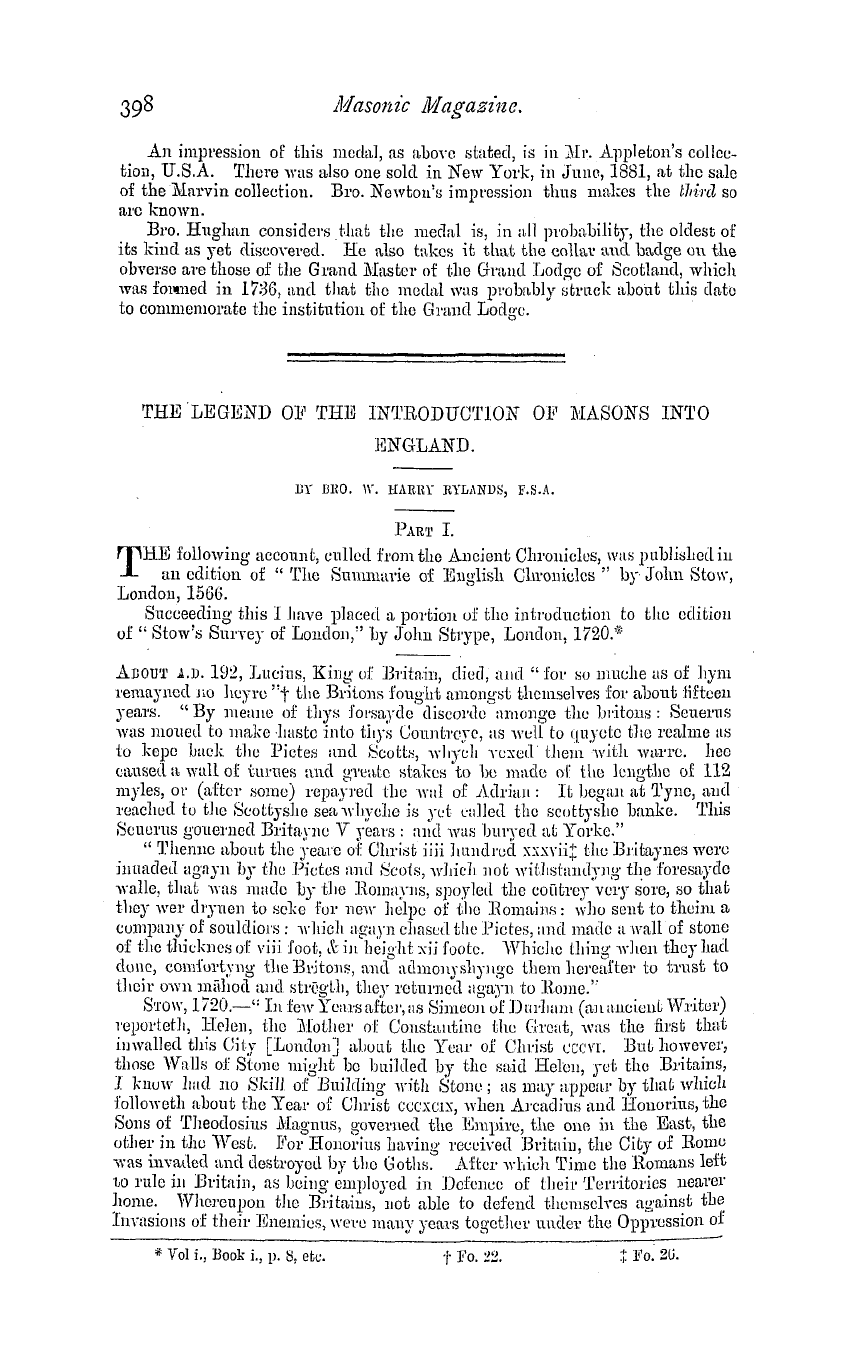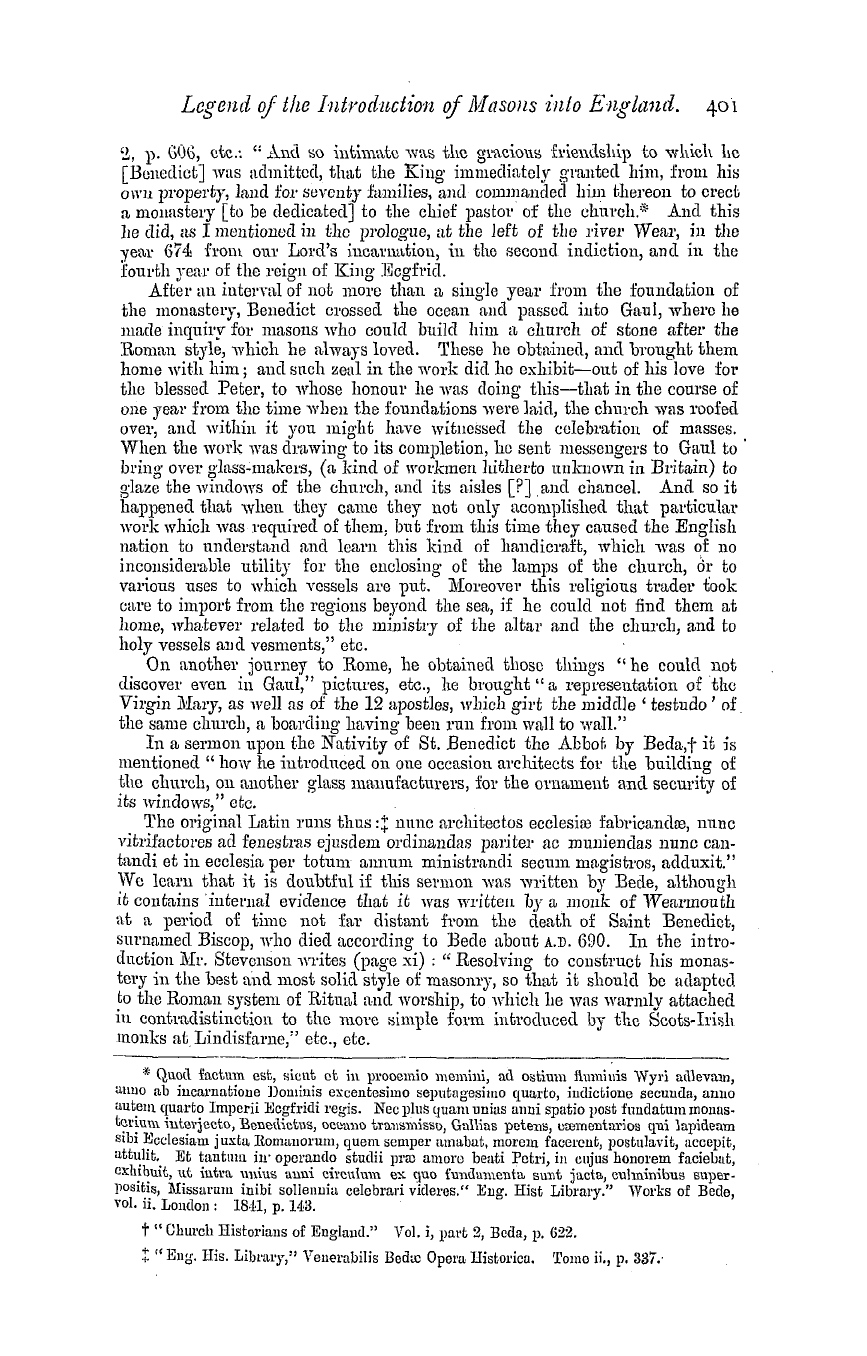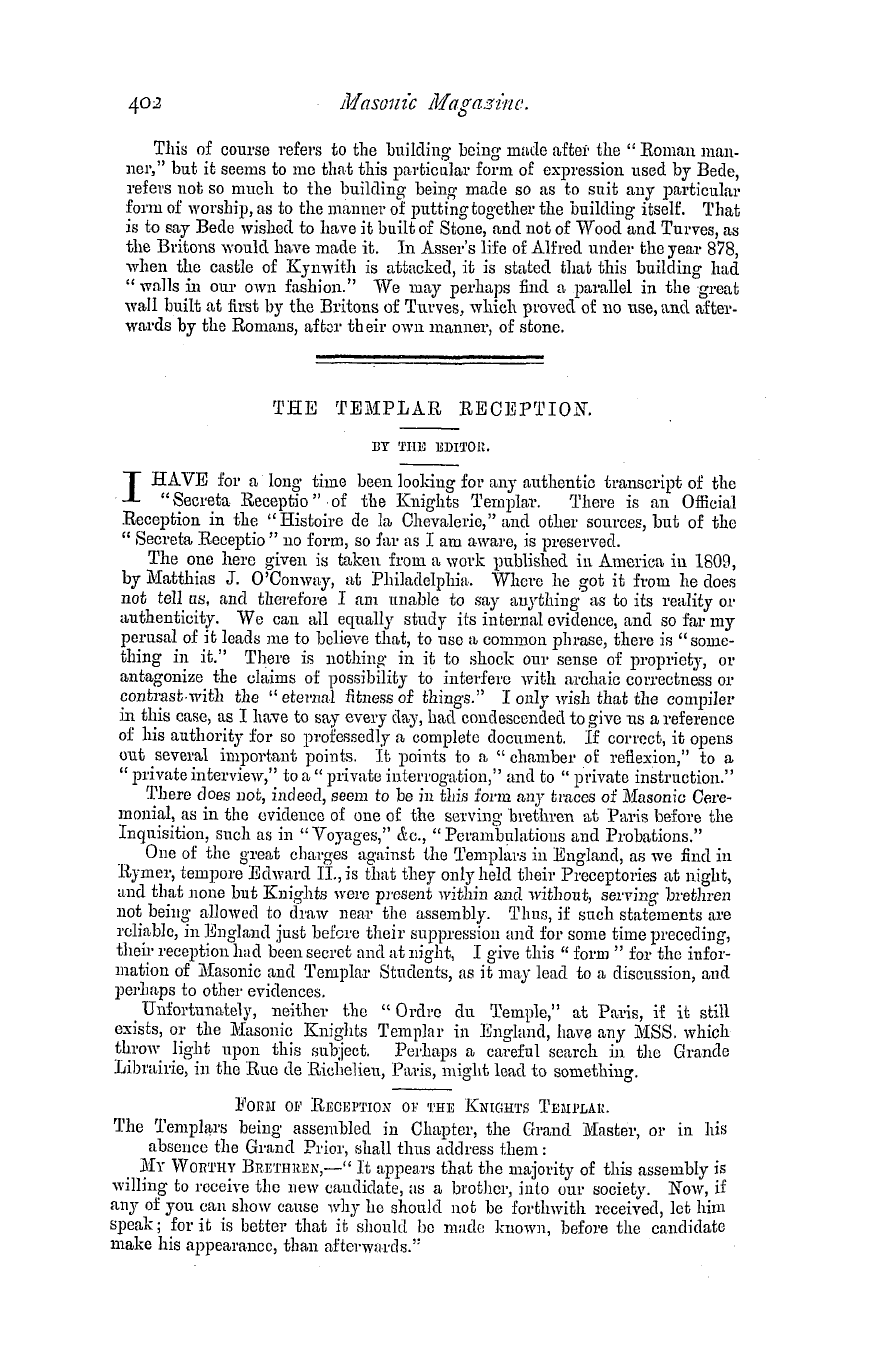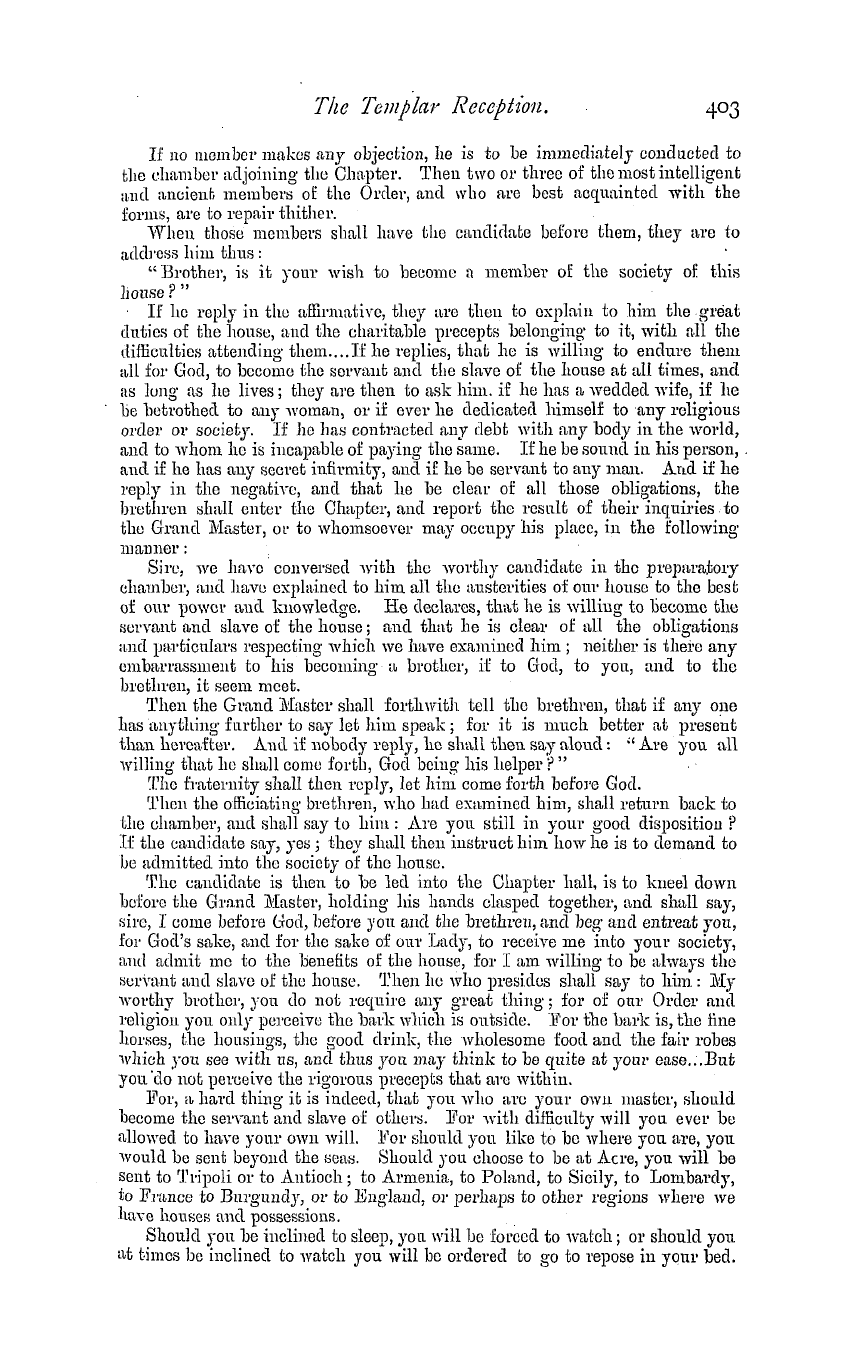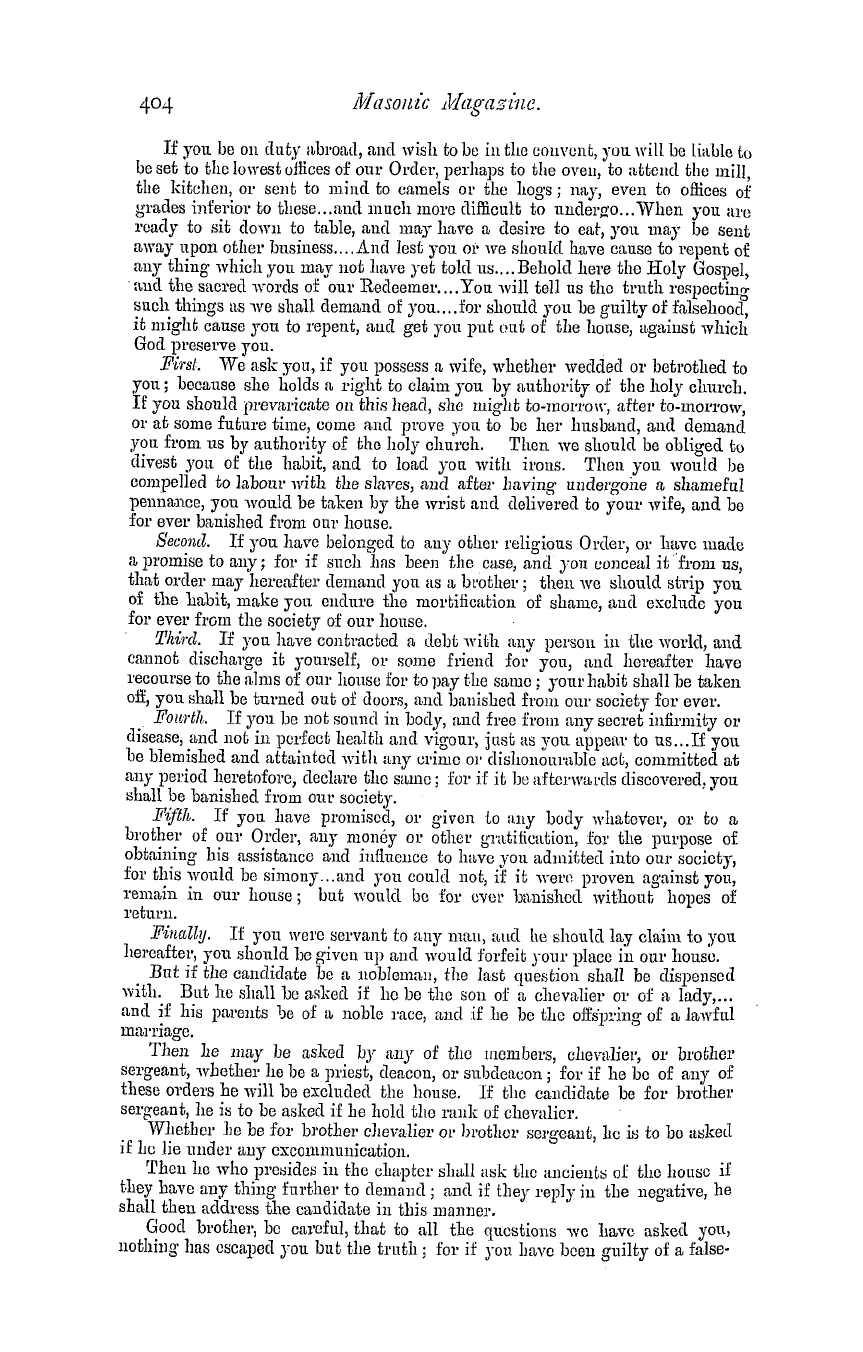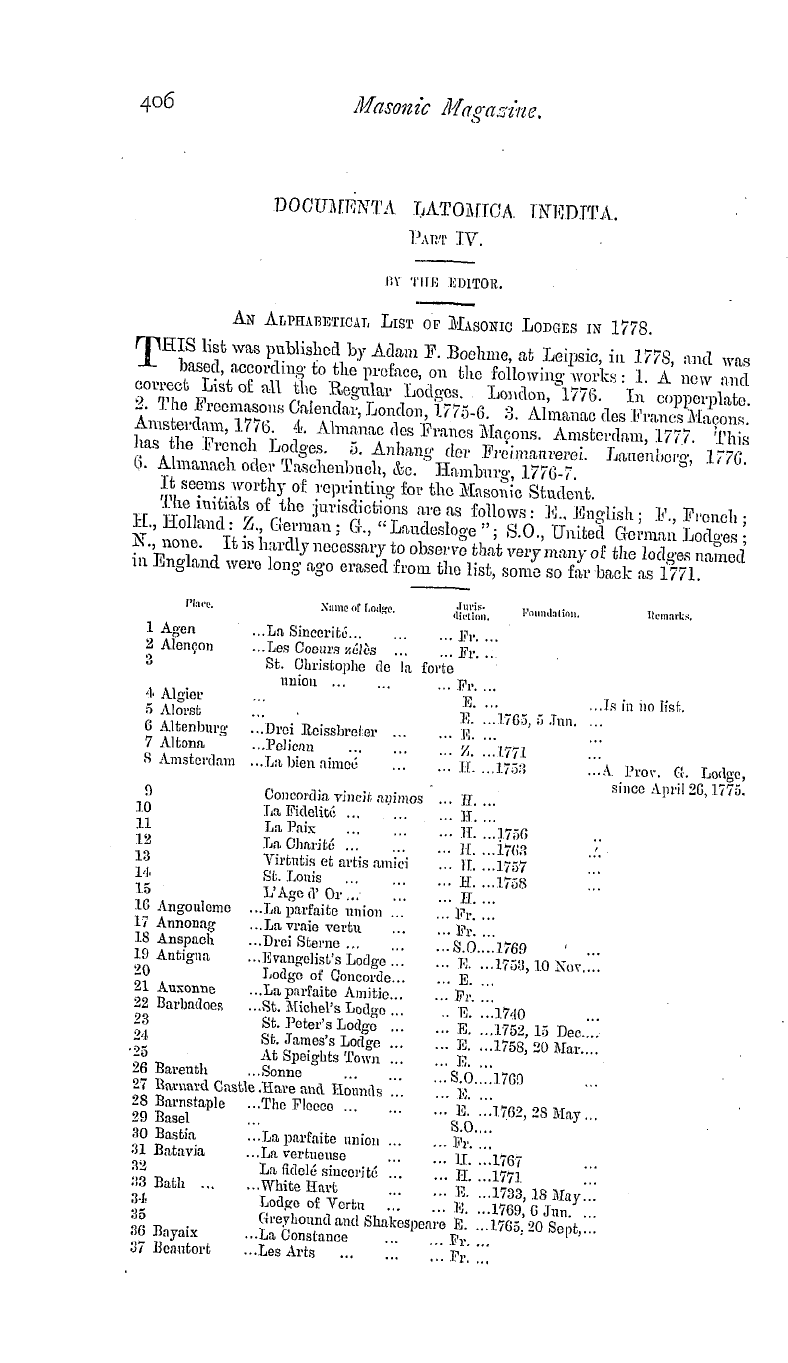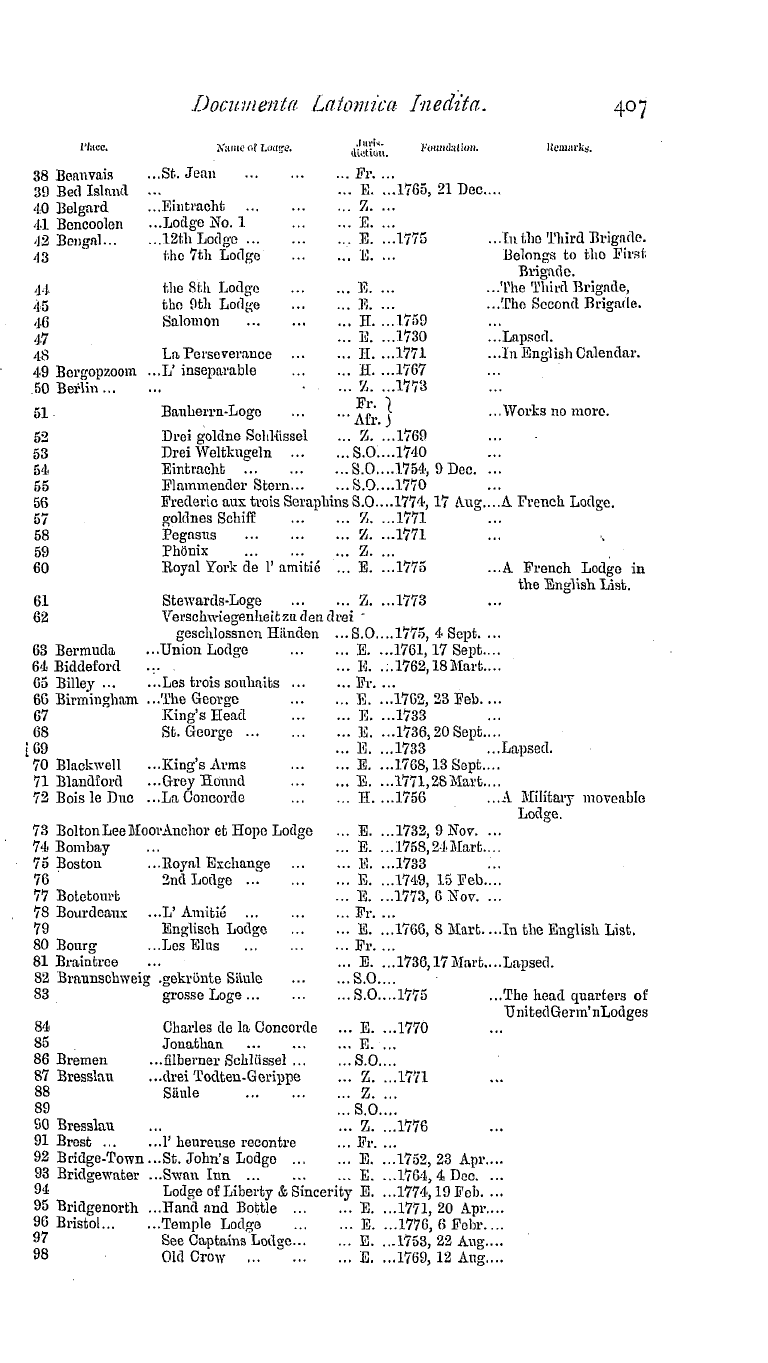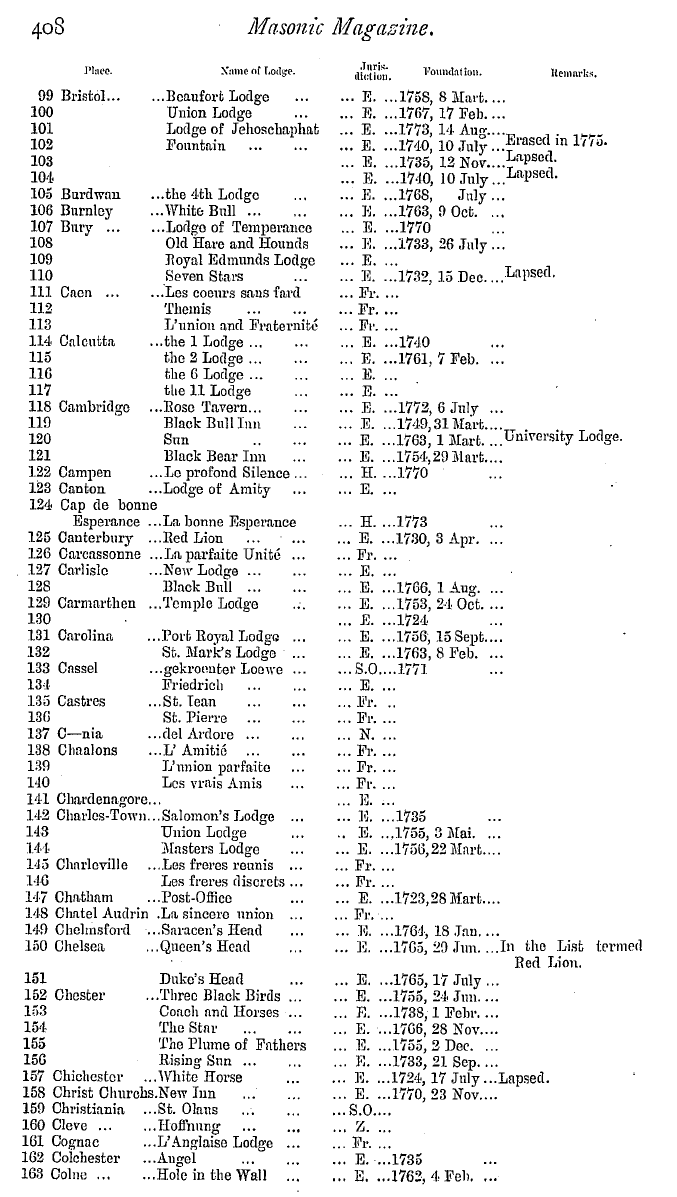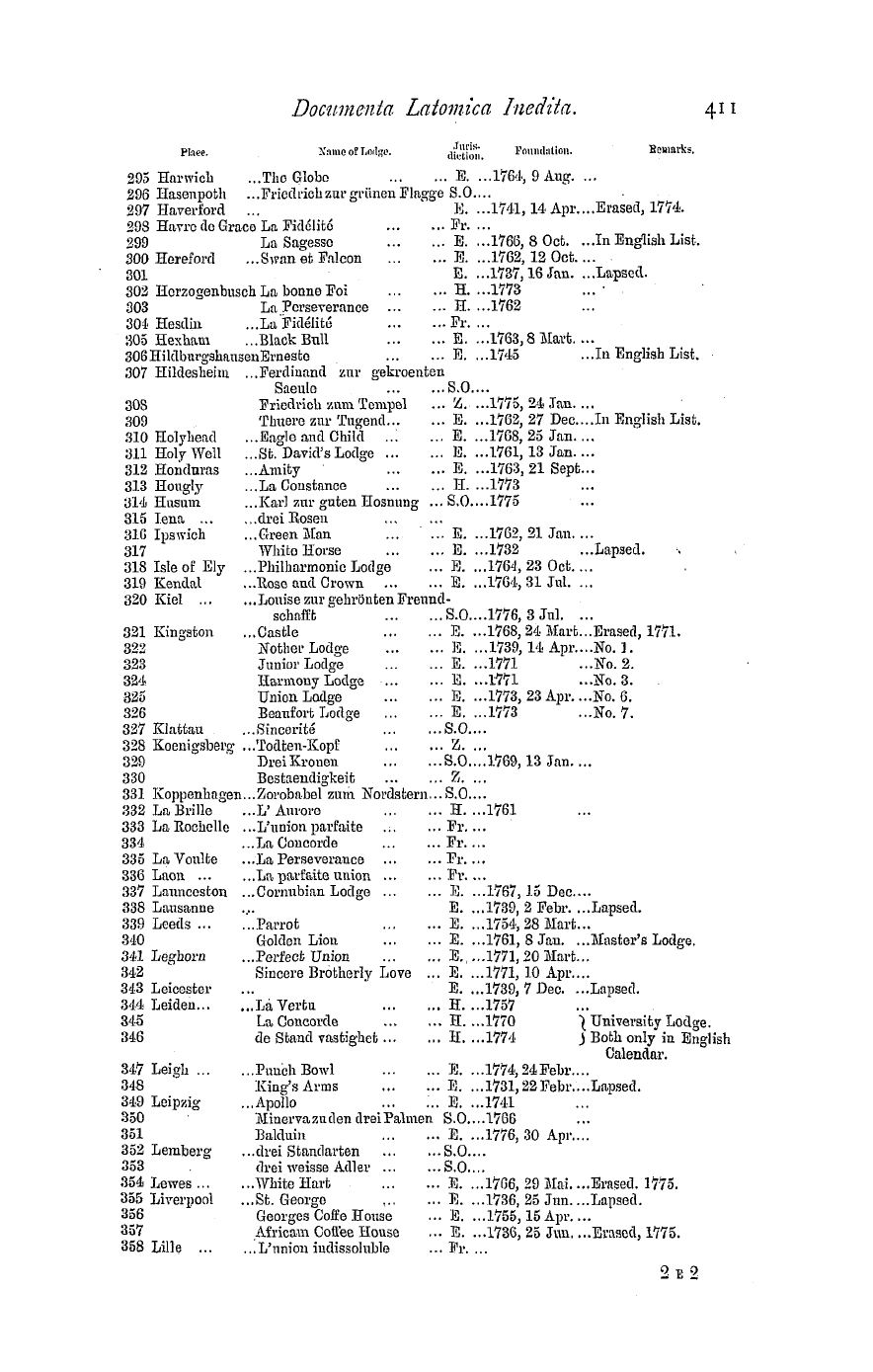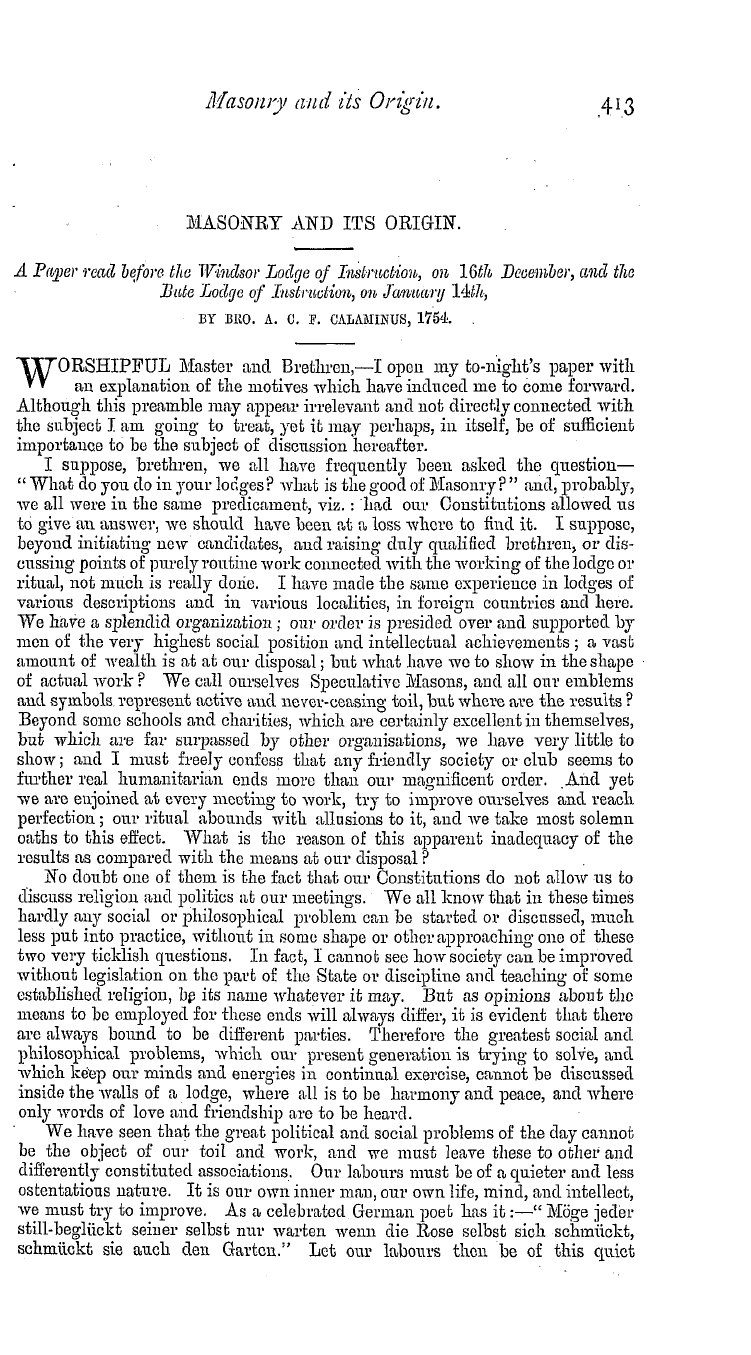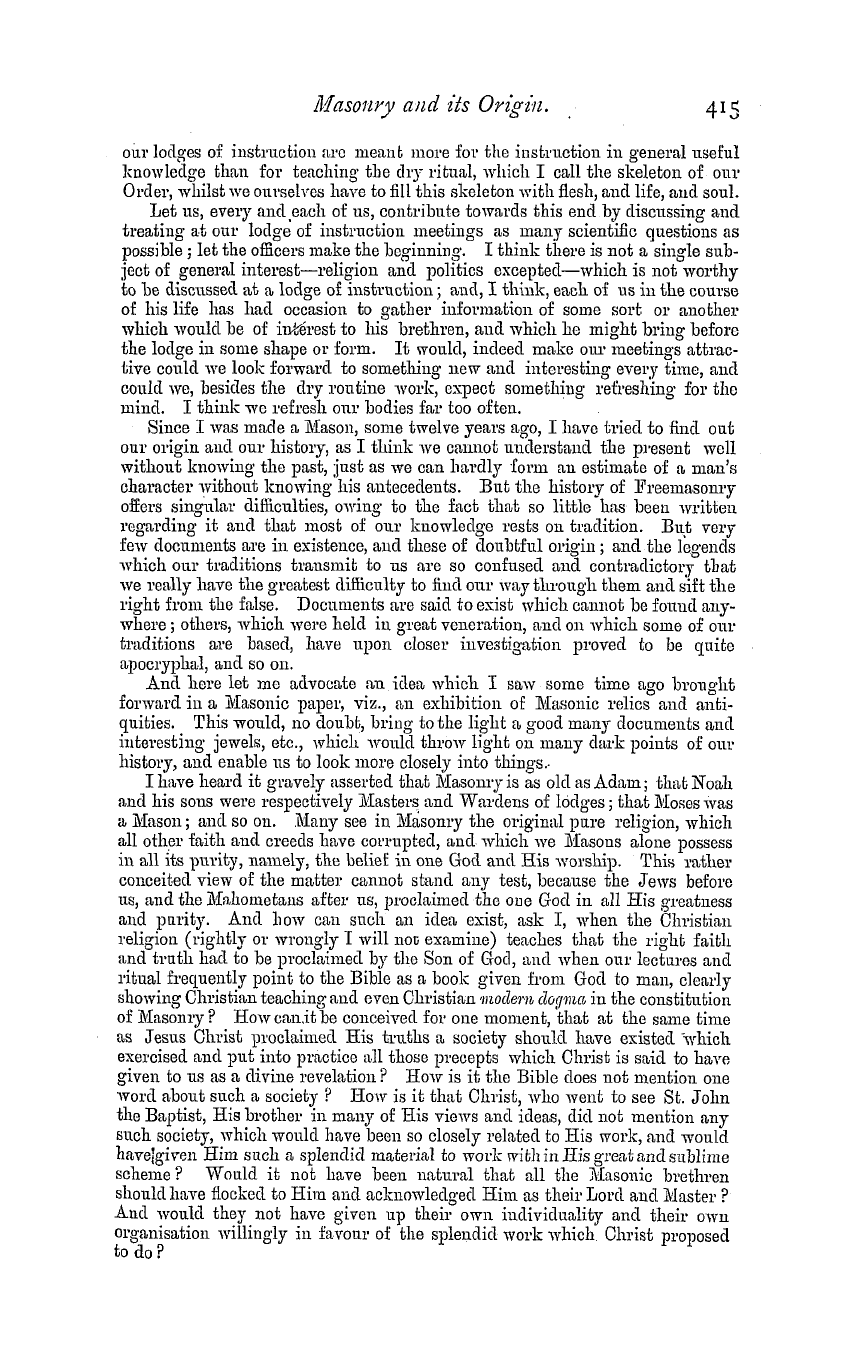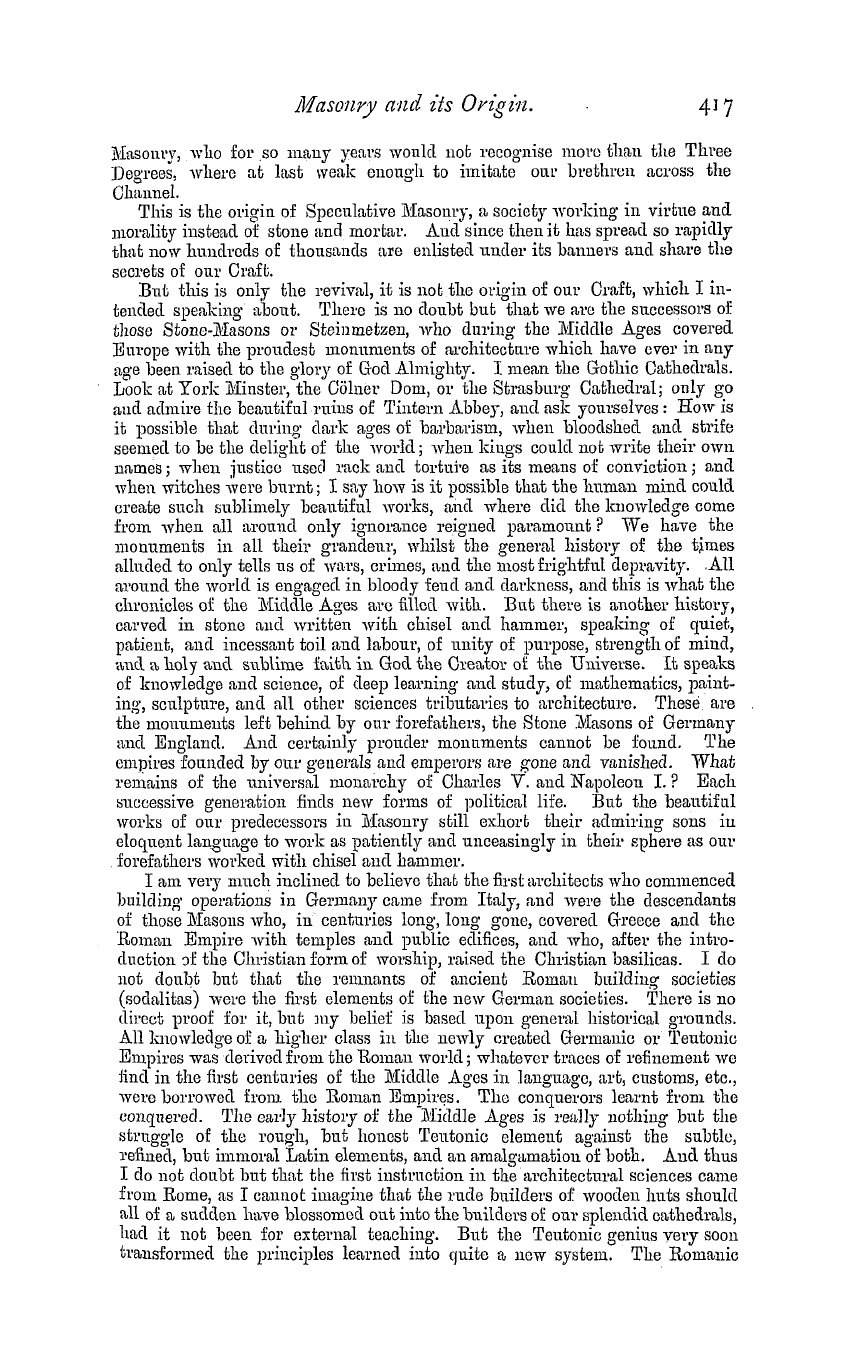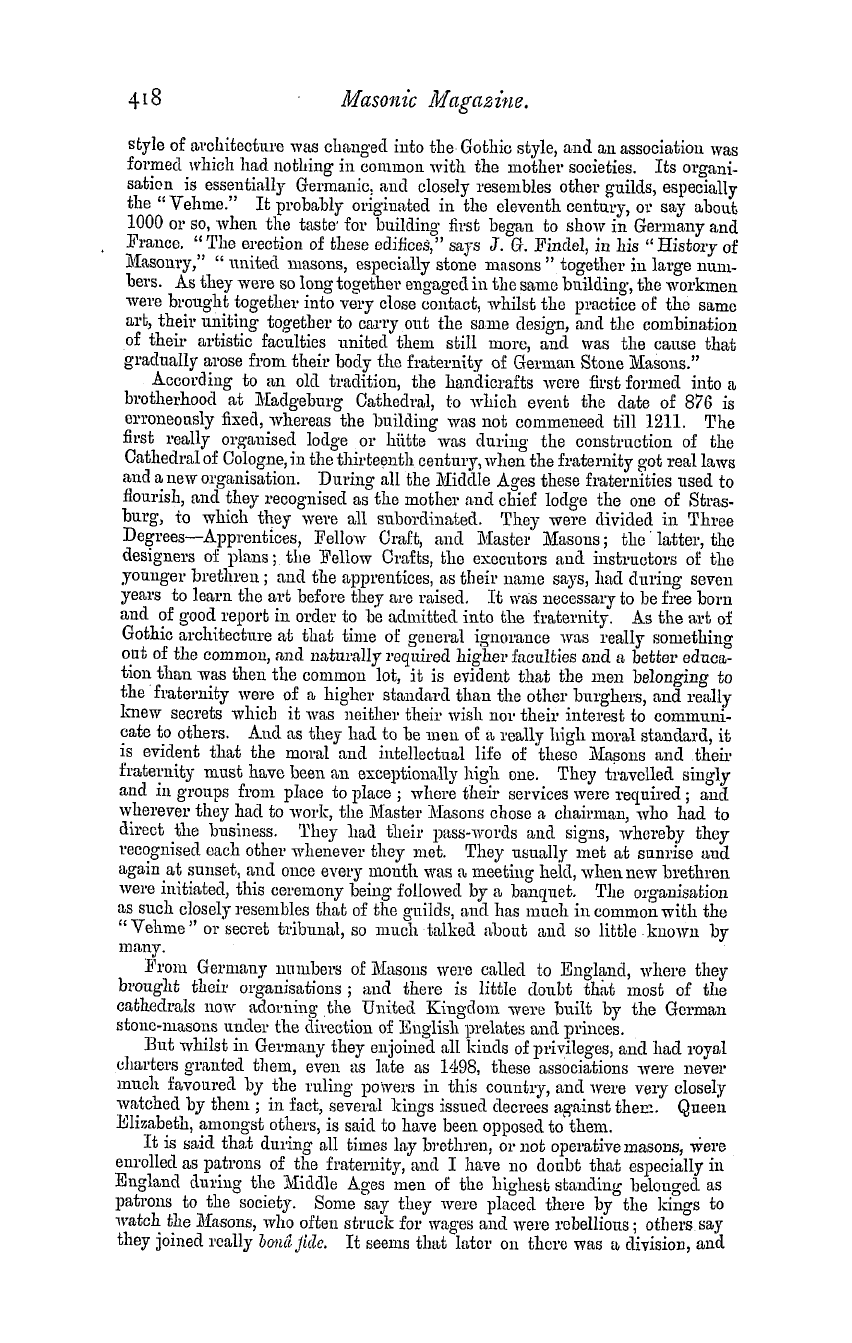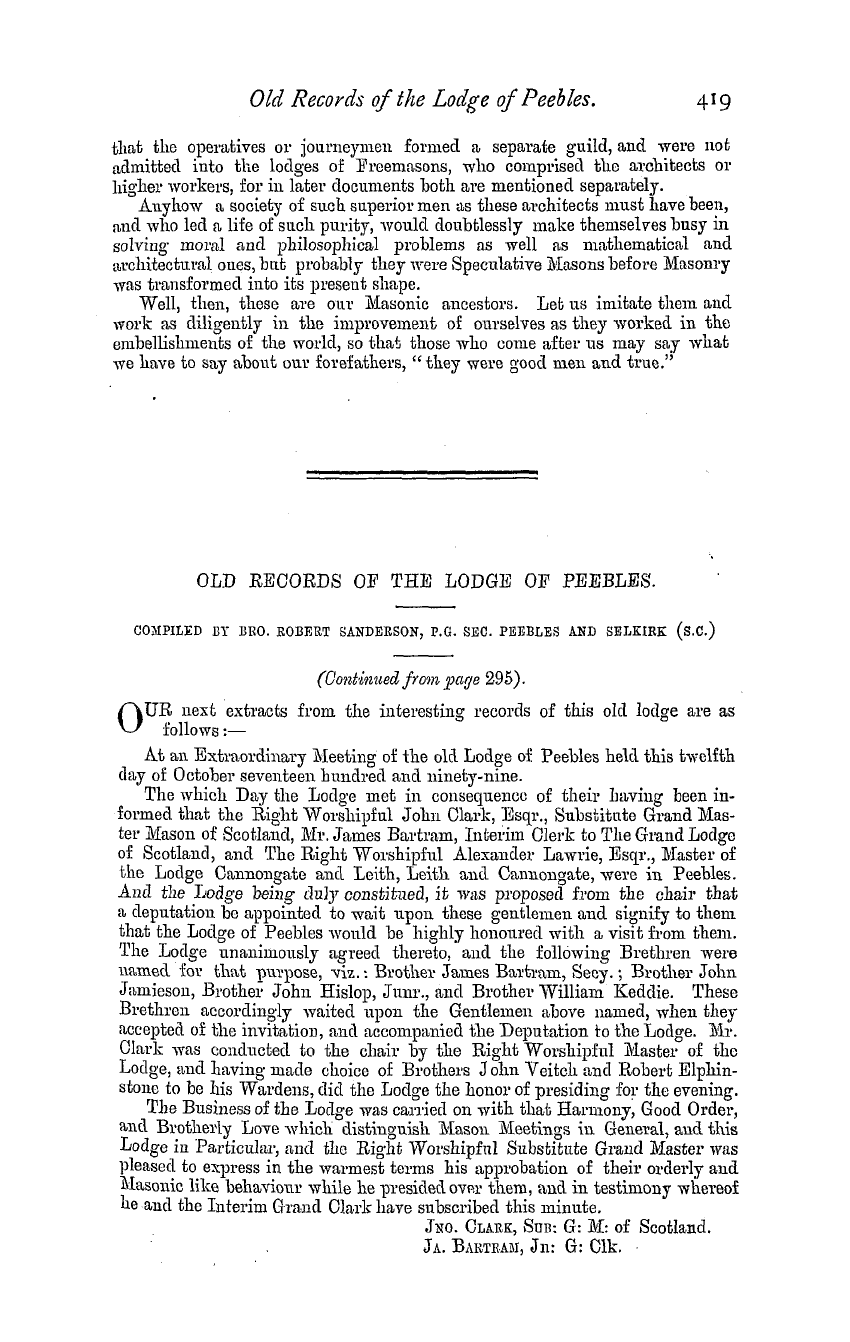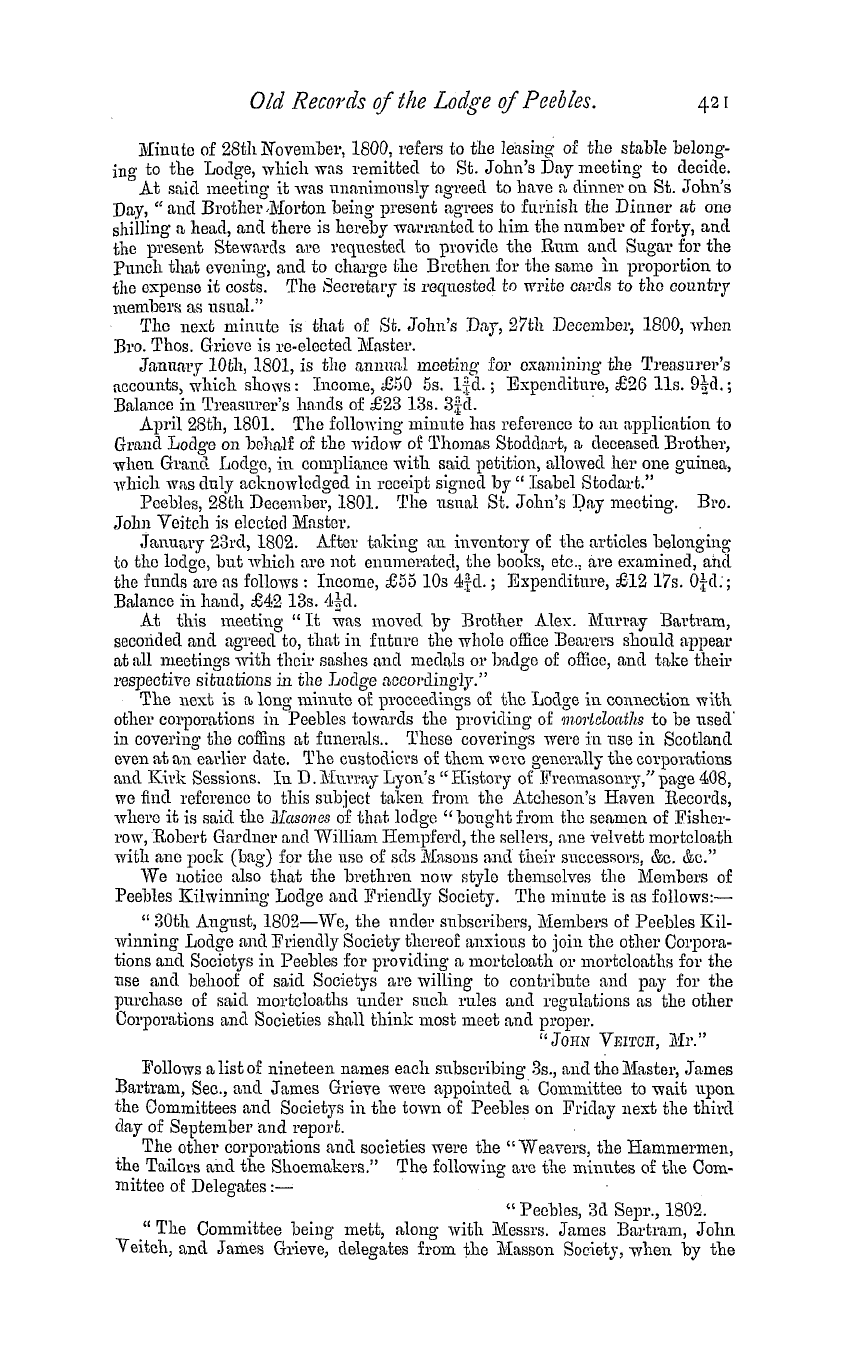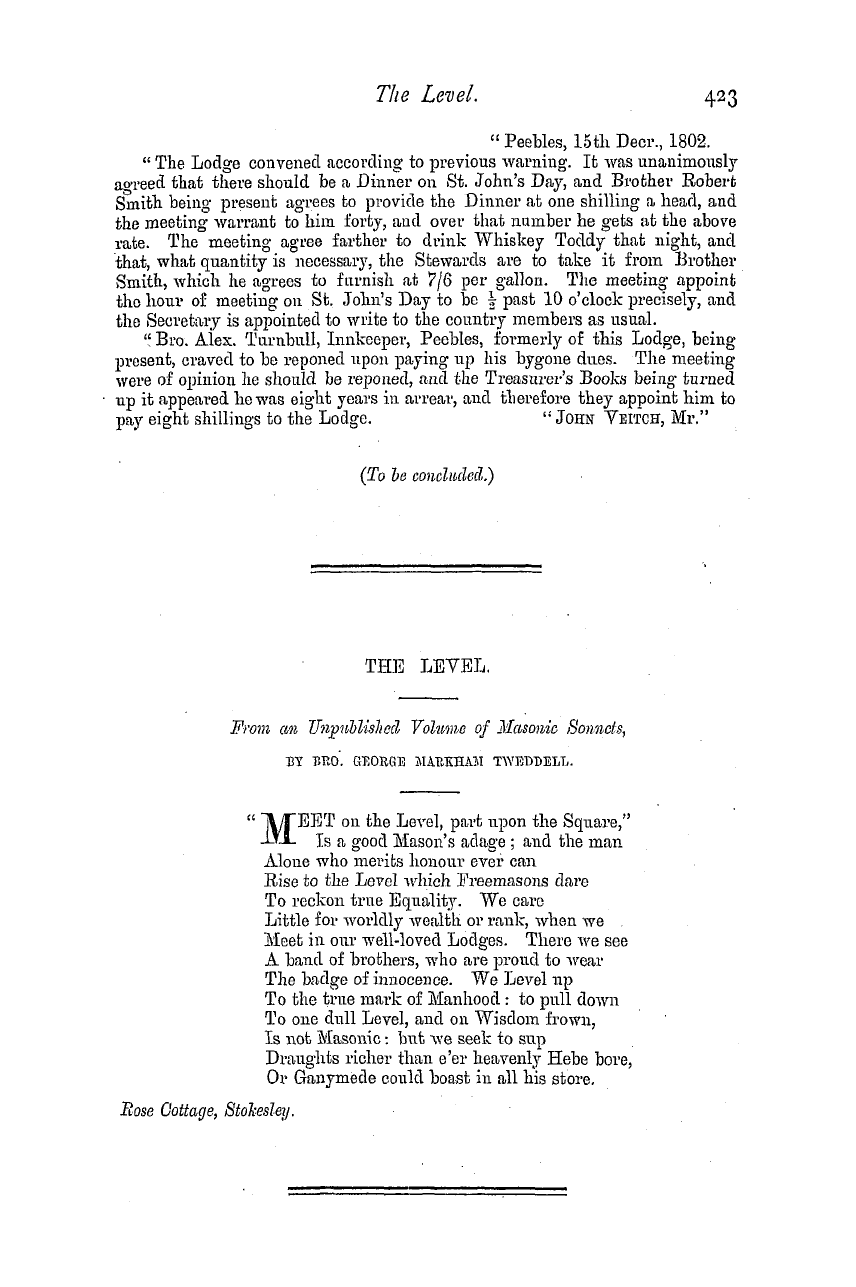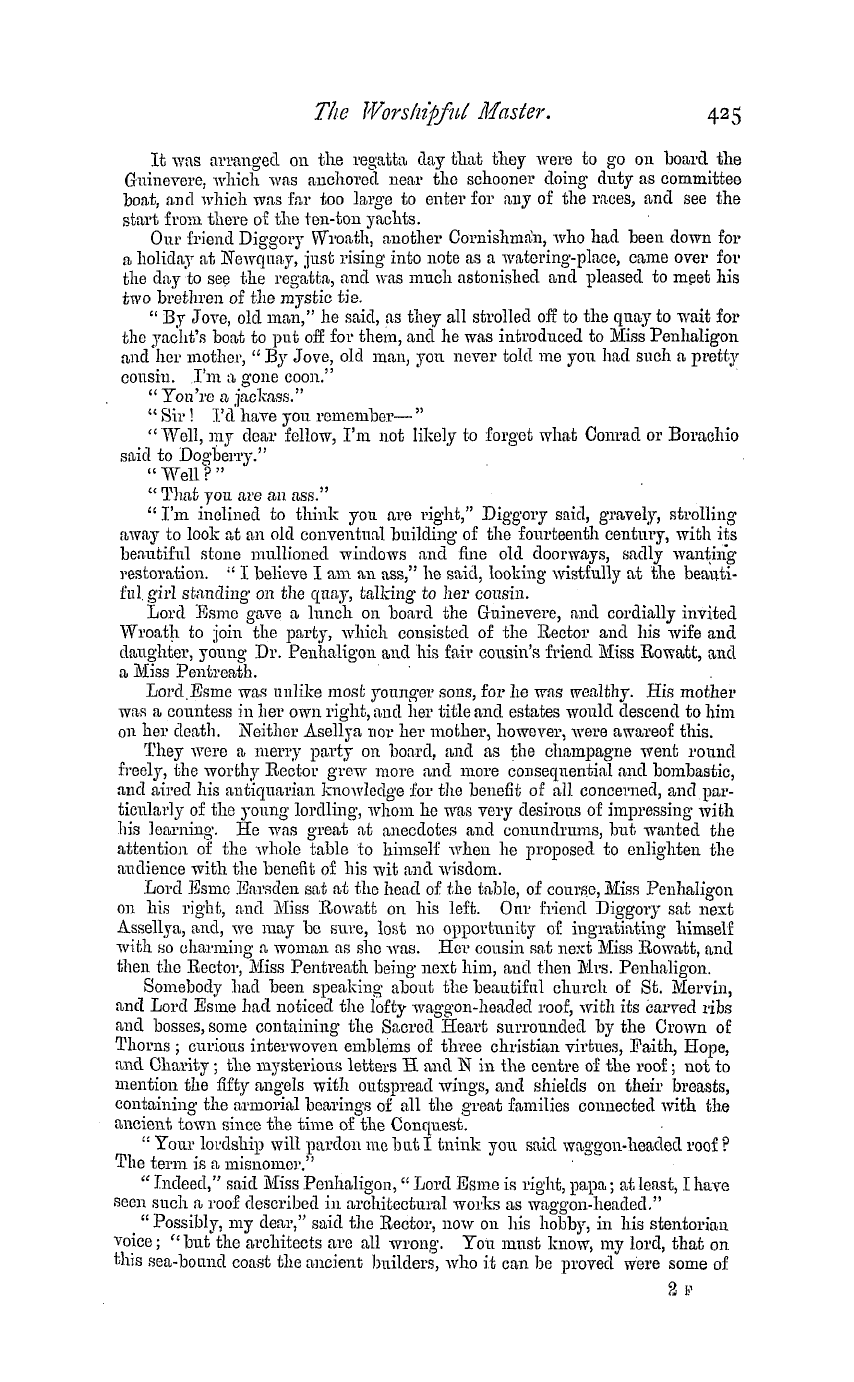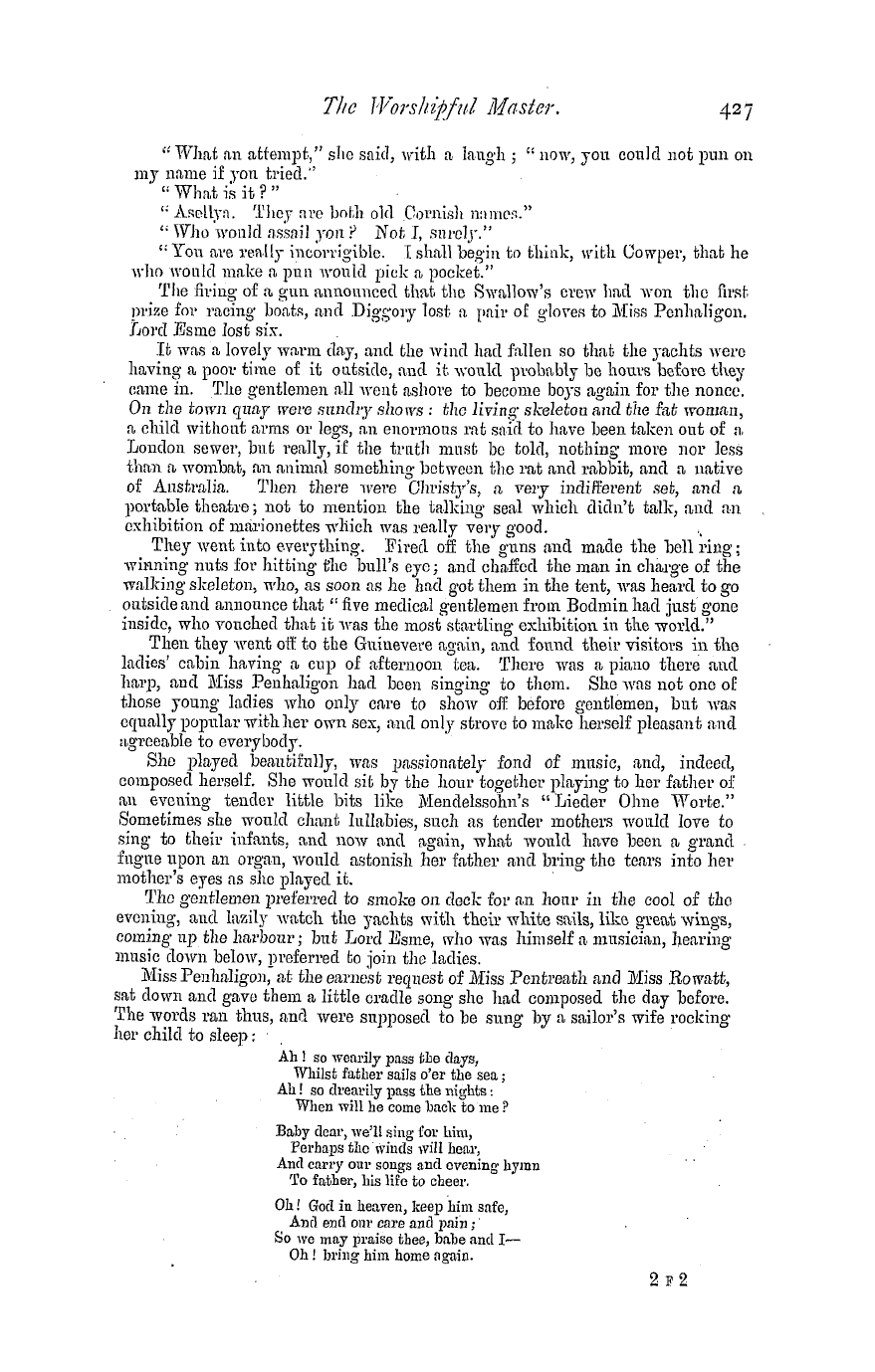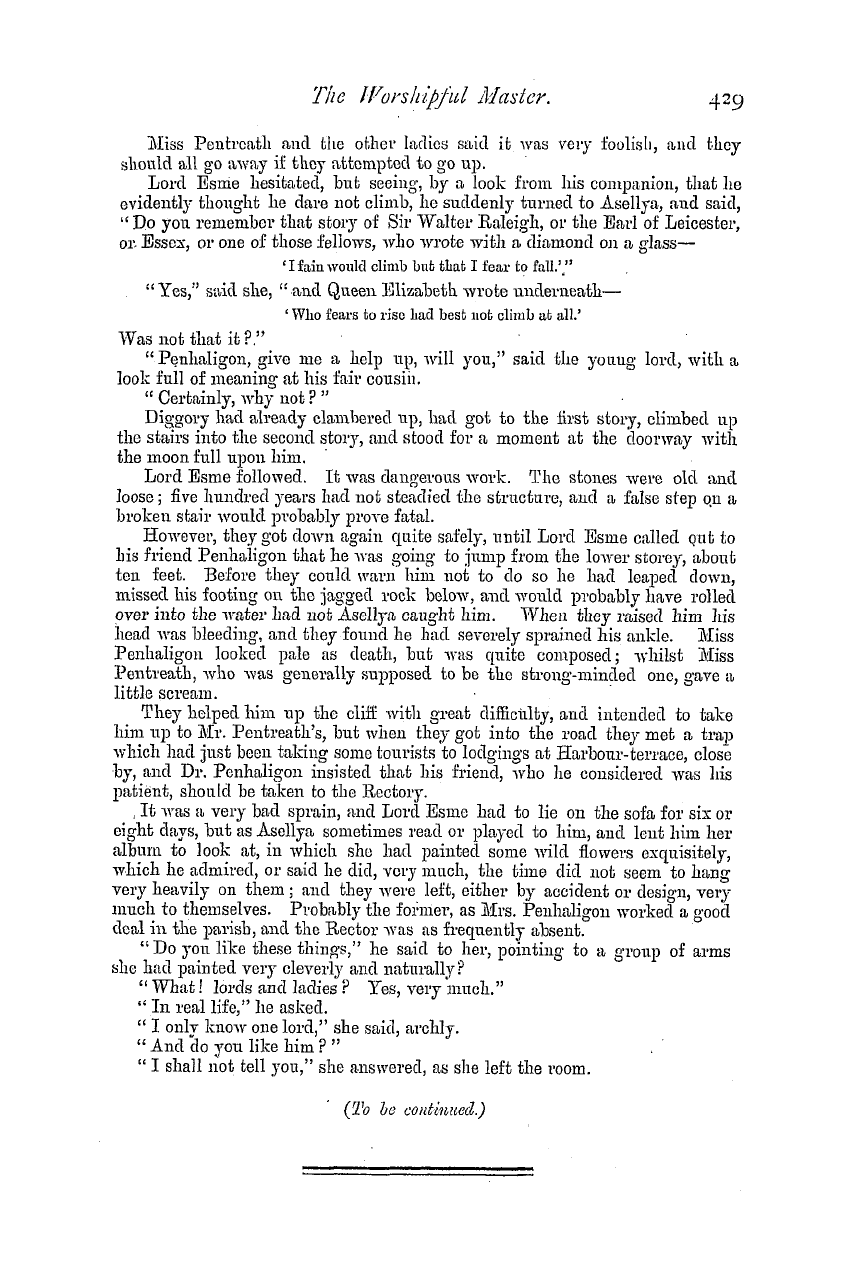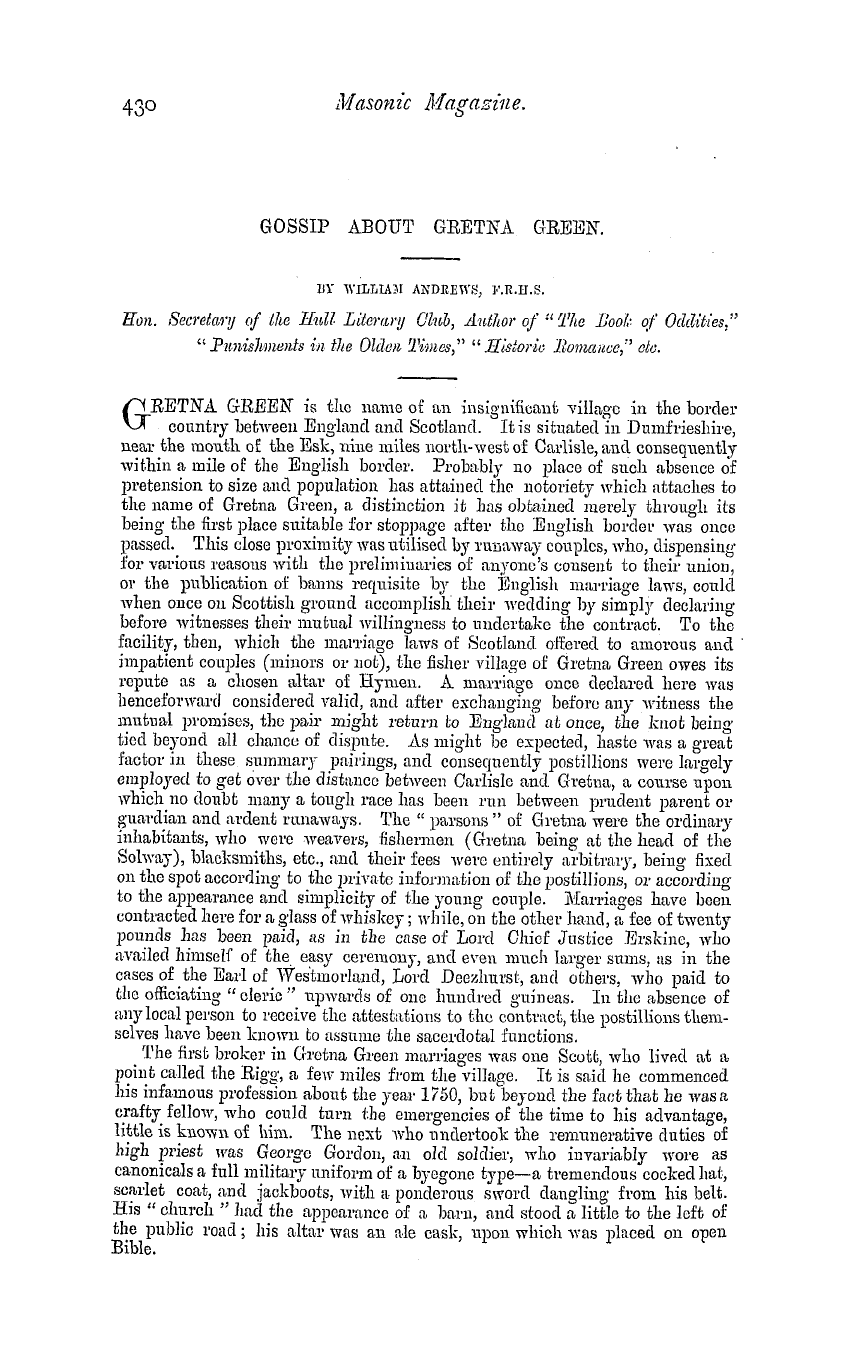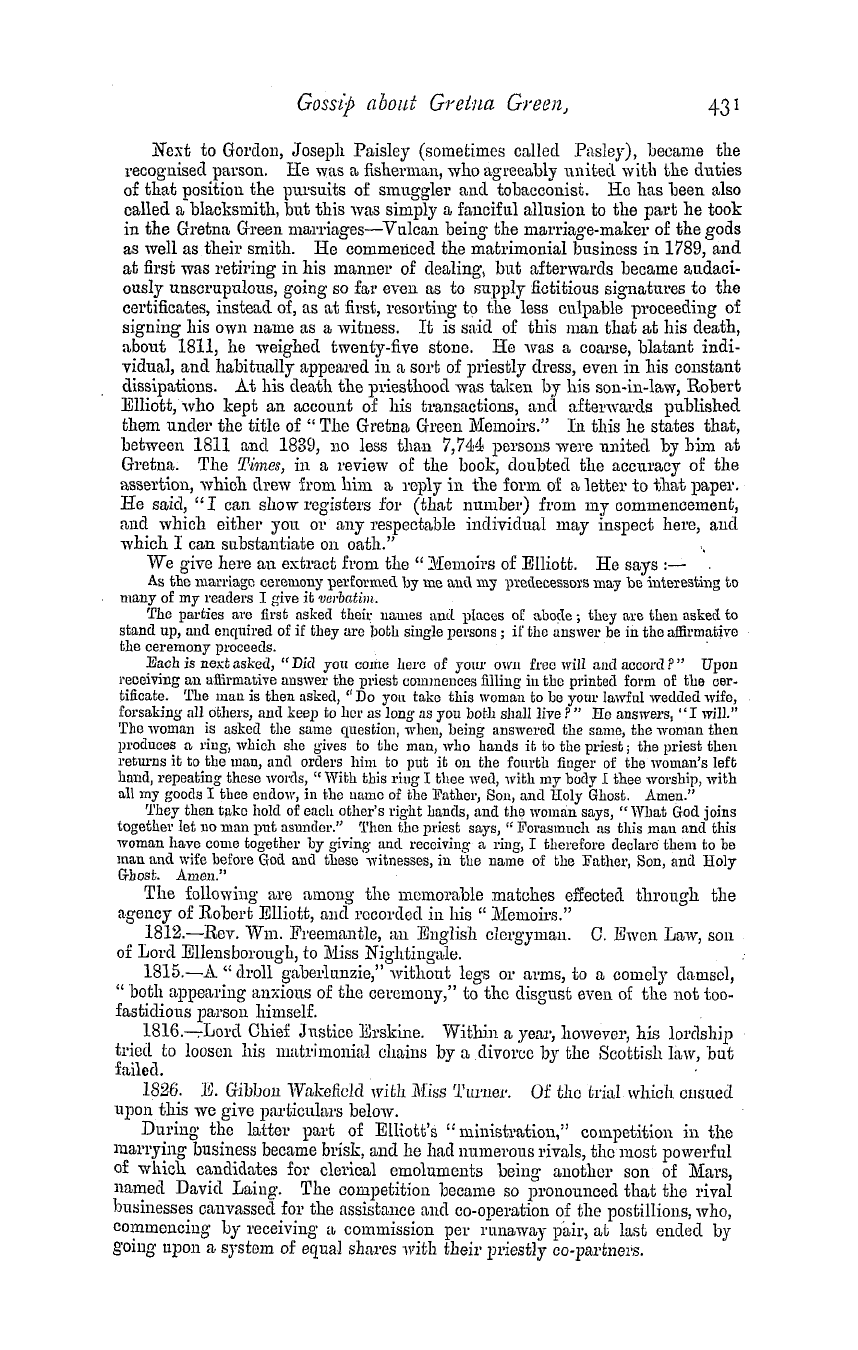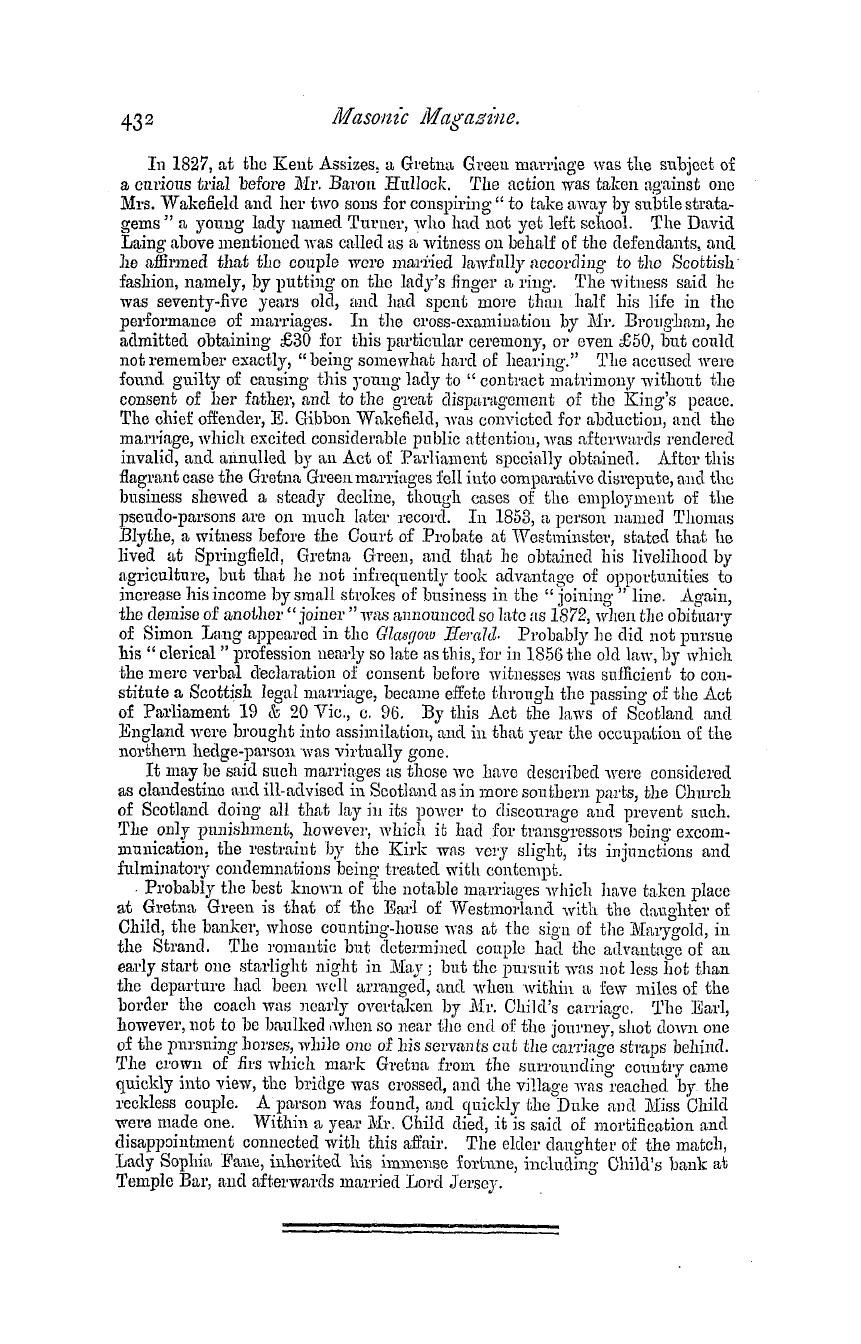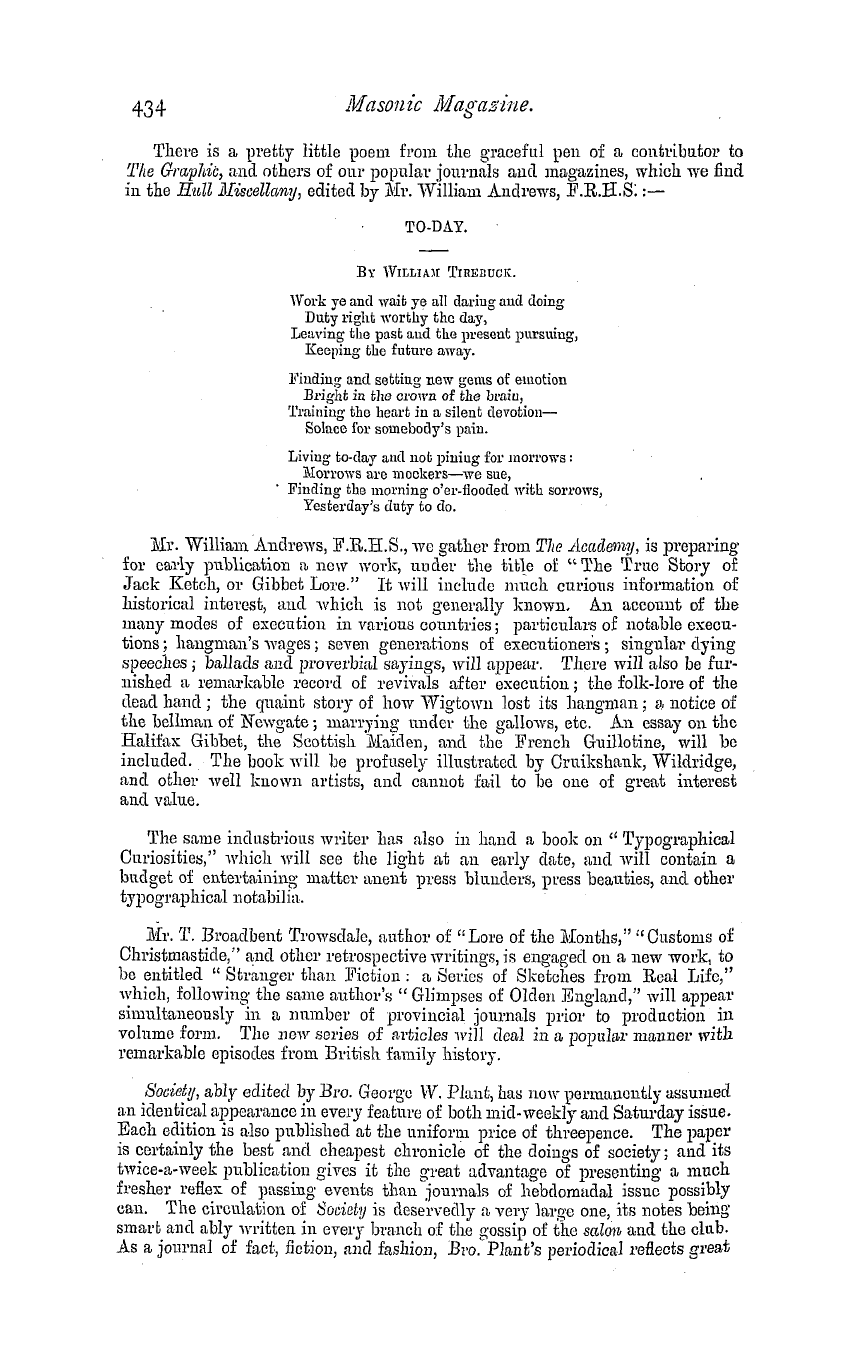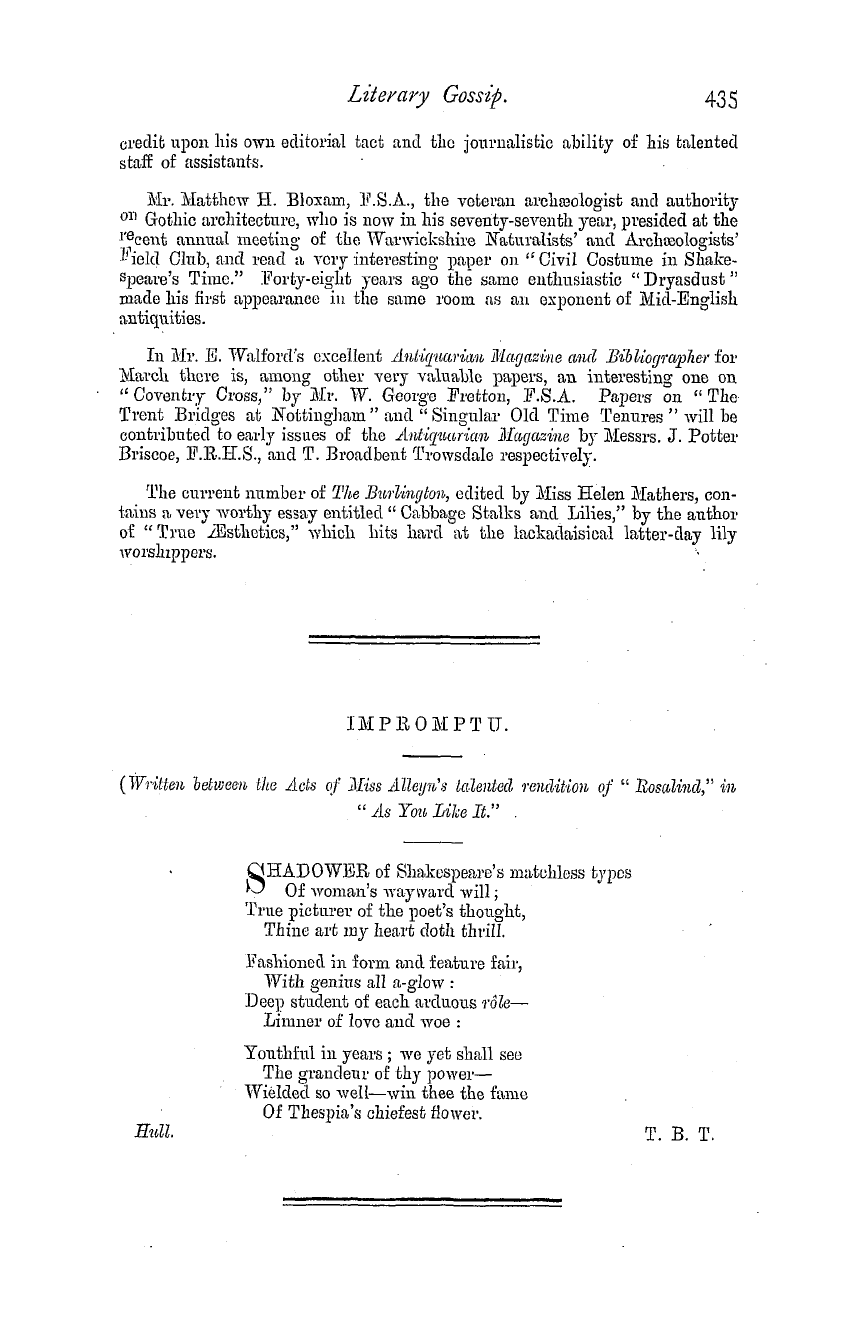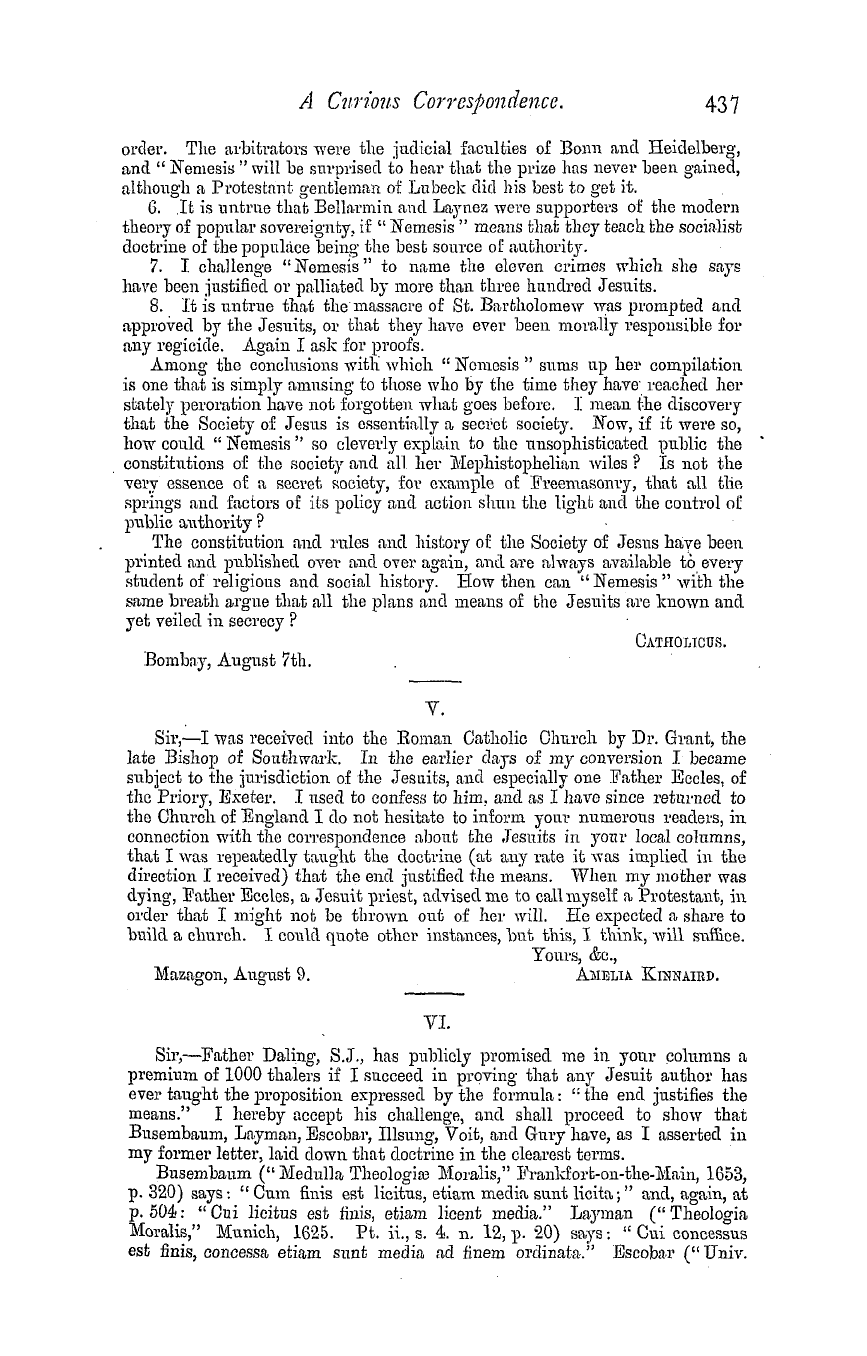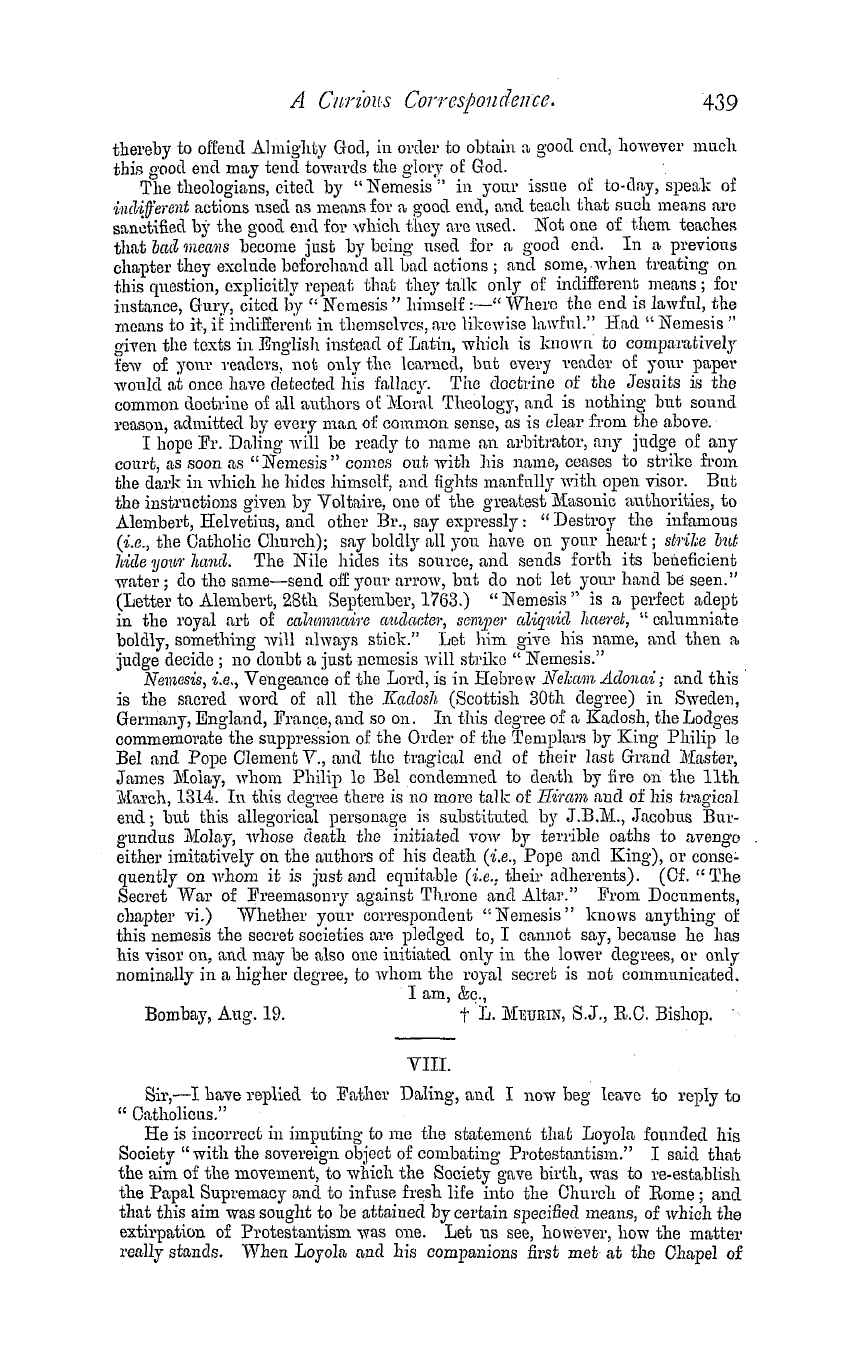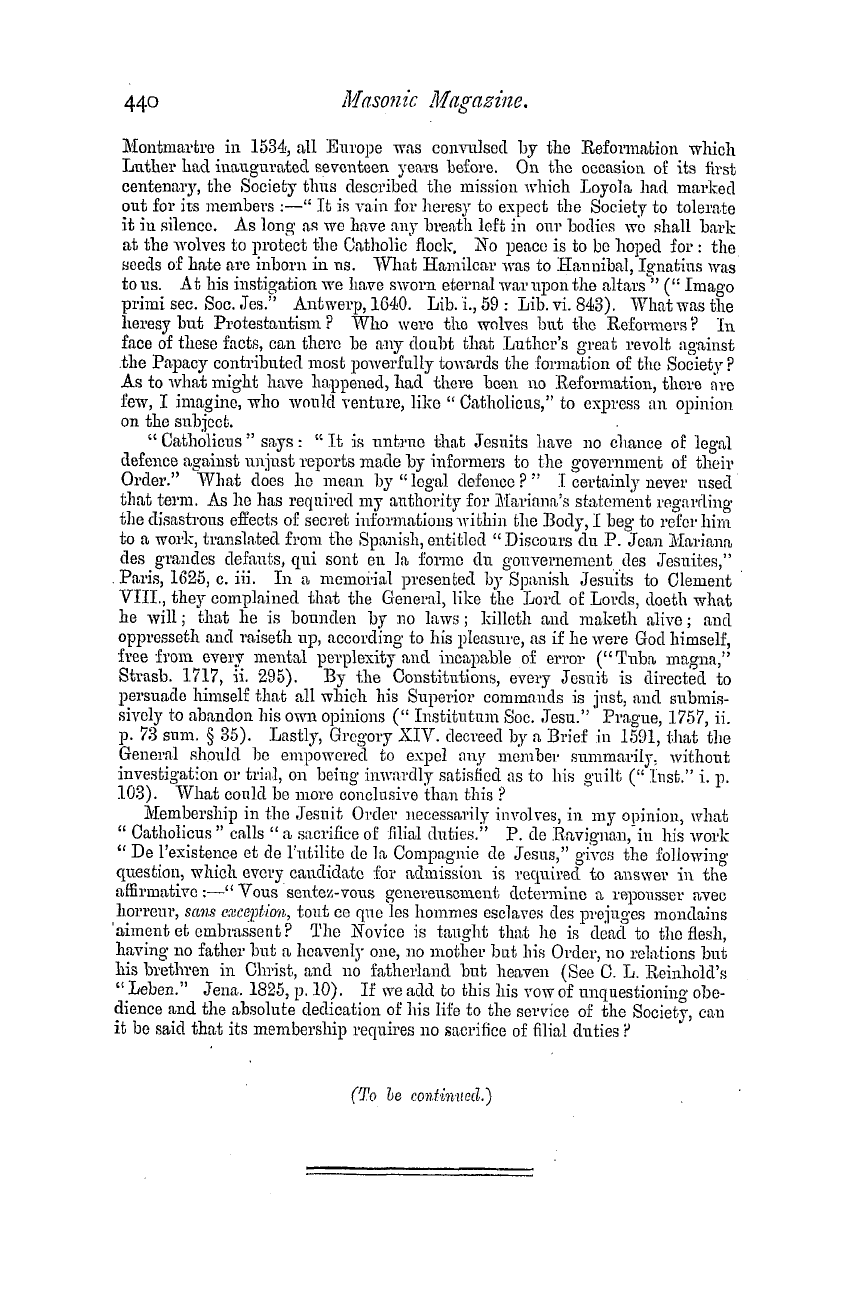Note: This text has been automatically extracted via Optical Character Recognition (OCR) software.
The Legend Of The Introduction Of Masons Into England.
" Who shortly after arrived here in Britain . Where , saith Bedc , they were received as Friends . But as it proved , they minded to destroy the Country as Enemies . For after that they had driven out the Scots and Picts , they also drave the Britains , some over the Seas , some into the West Mountains of Wales and Cornwal ; and divided the Country into divers Kingdoms amongst themselvesThese Saxons were likewise , ( as the Britons were )
, ignorant of the Architecture , or Building with Stone , until the Year of Christ PCLXXX . For then it is affirmed , that , Benet , Abbot of Wirral , Master to the Reverend Bede , first brought Masons and Workmen in Stone into this Island among the Saxons . He , 1 say , brought hither Artificers of Stonehouses , Painters and Glaziers : Arts before that Time unto the Saxons unknown : who before that Time , used but Wooden Buildings .
"And to this accov & ethPolychronicon , who saith Then had ye Wooden Churches ; nay , Wooden Chalices , and Golden Priests : hat since Golden Chalices and Wooden Priests . And to knit up this argument , King Edgar , in his Charter to the Abbey of Malmesbury , Dated the Year of Christ DCCCCLXXIV , hath Words , to this Effect ; All the Monasteries in my Bealm , to the outward Sight ., are nothing hut ivorm-eaten and rotten Timber , and Boards , and , thai worse is , within theij are almost empty and void of Divine Service .
"Thus much must be said tor Walling-, not only in respect of this City , but generally also of the first Practice of building Walls within the Realm . Now to return to our own City , and to relate how the Walls thereof have been since their Foundation , preserved ; maintained and repaired : Taking first into our consideration , the Name whereby this City , ( thus strengthned with Walls and Gates ) is called , " etc ., etc . The repairsetc . are traced through , various reigns—from after it had been
, destroyed "by the Danes , and other Pagan Enemies , about the Year of Christ DCCCXXXIX , was by Alfred King of the West-Saxons , in the Year DCCCLXXXVI , repaired and honourably restored , and made again habitable : " etc ., up to the date M . CCCCLXXVII when during the Mayoralty of Ralph Josceline , certain portions were restored by the Skinners and other Companies .
On page 10 , the description of some remains of a portion of the wall unearthed , during alterations made at Bishopsgate in 1707 , described by Dr . Woodward , Professor of Physick at Gresham College . " The Foundation of the Wall here lay Eight Foot beneath the present Surface ; and from that up to almost Ten . Foot in Height , it was compiled of Rag-stones , with single Layers of broad Tiles interposed , each Layer at Two Foot Distance . To this Height the Workmanship was after the Roman manner . And these were
the Remains of the ancient Wall , supposed to be that built by Constantine the Great . In this it was very observable , that the Mortar was ( as usual in the Roman Works ) so very firm and hard , that the Stone it self as easily brake , and gave way , as that . It was thus far from the Foundation upwards Nine Foot in thickness , and yet so vast a Strength and Bulk had not been able to secure it from being beat down , and near levelled with the " ¦ round . "
We have here the account of the wall built successively of Turves , by the Britons , and of Stone by the Romans ,-to which with other matters relating to building as recorded in the Chronicles I hope to be able to return again on a future occasion , as I have a large number of notes on the subject . When writing my communication to the Freemason * there was no possibility of referring to the text of " Bede ' s Lives of the Abbots of Wearmouth and Jarrow "
, and I could only state that it appeared he mentioned Masons having been brought from France to build a church in the Roman Manner . The following is the passage in that work , referred to , taken from the " Church Historians of England Translated , " by the Rev . Joseph Stevenson , M . A . ( Beda , Vol . i , ( part
Note: This text has been automatically extracted via Optical Character Recognition (OCR) software.
The Legend Of The Introduction Of Masons Into England.
" Who shortly after arrived here in Britain . Where , saith Bedc , they were received as Friends . But as it proved , they minded to destroy the Country as Enemies . For after that they had driven out the Scots and Picts , they also drave the Britains , some over the Seas , some into the West Mountains of Wales and Cornwal ; and divided the Country into divers Kingdoms amongst themselvesThese Saxons were likewise , ( as the Britons were )
, ignorant of the Architecture , or Building with Stone , until the Year of Christ PCLXXX . For then it is affirmed , that , Benet , Abbot of Wirral , Master to the Reverend Bede , first brought Masons and Workmen in Stone into this Island among the Saxons . He , 1 say , brought hither Artificers of Stonehouses , Painters and Glaziers : Arts before that Time unto the Saxons unknown : who before that Time , used but Wooden Buildings .
"And to this accov & ethPolychronicon , who saith Then had ye Wooden Churches ; nay , Wooden Chalices , and Golden Priests : hat since Golden Chalices and Wooden Priests . And to knit up this argument , King Edgar , in his Charter to the Abbey of Malmesbury , Dated the Year of Christ DCCCCLXXIV , hath Words , to this Effect ; All the Monasteries in my Bealm , to the outward Sight ., are nothing hut ivorm-eaten and rotten Timber , and Boards , and , thai worse is , within theij are almost empty and void of Divine Service .
"Thus much must be said tor Walling-, not only in respect of this City , but generally also of the first Practice of building Walls within the Realm . Now to return to our own City , and to relate how the Walls thereof have been since their Foundation , preserved ; maintained and repaired : Taking first into our consideration , the Name whereby this City , ( thus strengthned with Walls and Gates ) is called , " etc ., etc . The repairsetc . are traced through , various reigns—from after it had been
, destroyed "by the Danes , and other Pagan Enemies , about the Year of Christ DCCCXXXIX , was by Alfred King of the West-Saxons , in the Year DCCCLXXXVI , repaired and honourably restored , and made again habitable : " etc ., up to the date M . CCCCLXXVII when during the Mayoralty of Ralph Josceline , certain portions were restored by the Skinners and other Companies .
On page 10 , the description of some remains of a portion of the wall unearthed , during alterations made at Bishopsgate in 1707 , described by Dr . Woodward , Professor of Physick at Gresham College . " The Foundation of the Wall here lay Eight Foot beneath the present Surface ; and from that up to almost Ten . Foot in Height , it was compiled of Rag-stones , with single Layers of broad Tiles interposed , each Layer at Two Foot Distance . To this Height the Workmanship was after the Roman manner . And these were
the Remains of the ancient Wall , supposed to be that built by Constantine the Great . In this it was very observable , that the Mortar was ( as usual in the Roman Works ) so very firm and hard , that the Stone it self as easily brake , and gave way , as that . It was thus far from the Foundation upwards Nine Foot in thickness , and yet so vast a Strength and Bulk had not been able to secure it from being beat down , and near levelled with the " ¦ round . "
We have here the account of the wall built successively of Turves , by the Britons , and of Stone by the Romans ,-to which with other matters relating to building as recorded in the Chronicles I hope to be able to return again on a future occasion , as I have a large number of notes on the subject . When writing my communication to the Freemason * there was no possibility of referring to the text of " Bede ' s Lives of the Abbots of Wearmouth and Jarrow "
, and I could only state that it appeared he mentioned Masons having been brought from France to build a church in the Roman Manner . The following is the passage in that work , referred to , taken from the " Church Historians of England Translated , " by the Rev . Joseph Stevenson , M . A . ( Beda , Vol . i , ( part

